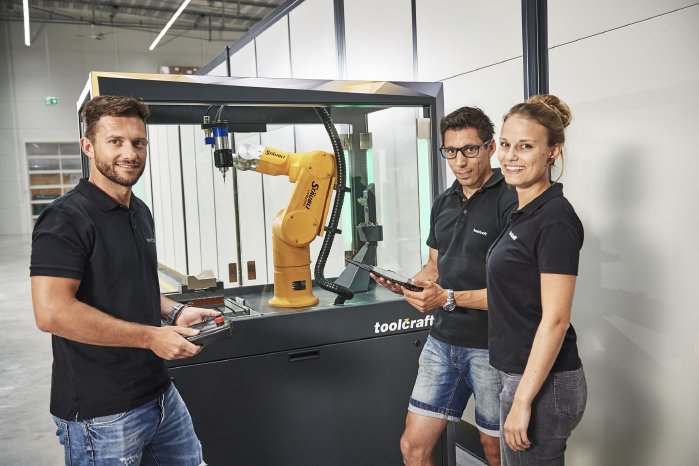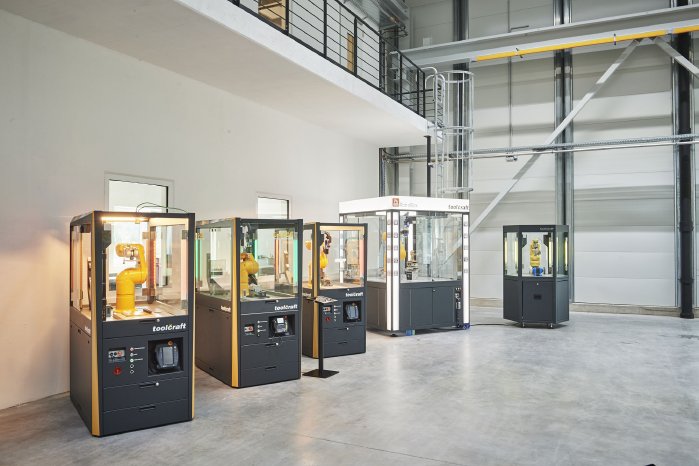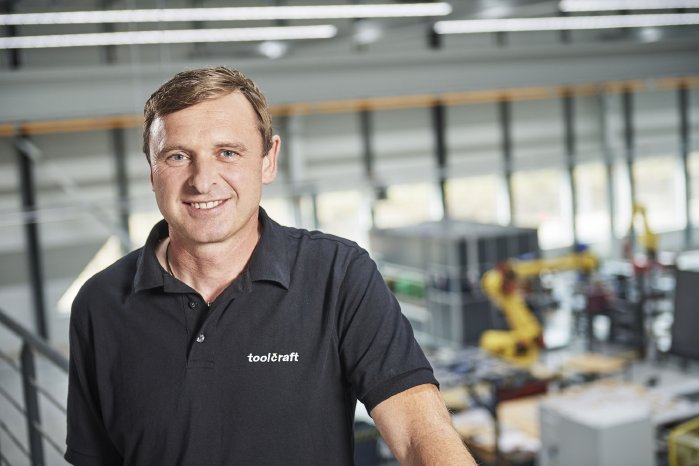G-code programming simplifies the operation of robot cells
G-code programming makes robot cells more user-friendly. The computer language from the field of CNC machining is subject to standards and is used globally. This means that machine operators around the world can control robots without the need to perform complex offline programming. In turn, this strips away any feelings of anxiety, as operators can continue working in their familiar environments where they are accustomed to giving commands. "G-code programming allows operators to access the program during the production process and to change this directly within the cell," says Thomas Wieland, head of engineering and robotics at toolcraft.
G-code programming creates a wealth of opportunities
Measurement cycles can also be incorporated into the production process. The robot simply picks up the measuring probe and executes a specific G-code. The sequence can be entered directly within the cell. If a command is forgotten during the programming, the operator can add this on the spot. During such processes, a post-processor can try to identify collisions with as much warning as possible. Changes to offline programming always have to be retransmitted, which involves the robot restarting the program from scratch. However, robot simulation software is recommended to rule collisions out completely.
Universal programming language – ruled surfaces are advantageous
While G-code programming can be used in virtually all robot cells, it is particularly suitable for ruled surfaces like recesses or drilled holes. Offline robot programming is always the more favourable choice for freeform surfaces. However, G-code programming pays off during the production of less complex individual components and parts with simple geometries. There is no need to spend a lot of money on a CAM system or expensive programming training courses. Instead, operators with no knowledge of robot programming can purchase a robot cell and put it into operation immediately.



